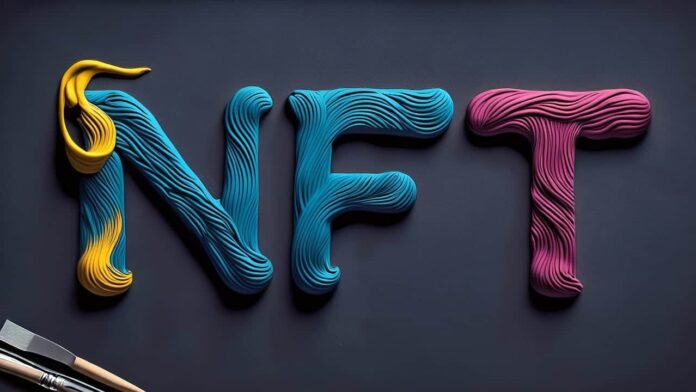The once-heralded world of non-fungible tokens (NFTs) is now facing a sobering reality – a staggering 96% of all NFT projects are now considered “dead,” according to a comprehensive analysis by NFT Evening. This alarming statistic underscores the volatile and unpredictable nature of the NFT market, which has experienced both dizzying highs and devastating lows over the past four years, leading many to wonder if NFTs are over and if the NFT market collapse is permanent.
The report paints a bleak picture, with more than 43% of NFT holders currently unprofitable, facing an average loss of 44.5% on their investments. This stark reality has shattered the illusion of NFTs as a surefire path to riches, exposing the market’s inherent risks and instability. The NFT crash and subsequent NFT market crash have left investors reeling, with many questioning the future viability of these digital assets.
The Fleeting Lifespan of NFTs
One of the most concerning findings from the NFT Evening report is the shockingly short average lifespan of NFTs. On average, an NFT project has a lifespan of just 1.14 years – a mere fraction of the longevity observed in traditional cryptocurrency projects. This rapid turnover suggests that the allure of digital art and digital scarcity is quickly fading, as the novelty and speculative nature of NFTs fail to translate into sustained long-term value.
The report also highlights the stark contrast between successful and failing NFT collections. While some, like the CryptoPunks collection, have managed to maintain strong community engagement and effective marketing strategies, others, such as the Pudgy Penguins, have seen a staggering 97% decline in value, leaving their holders with significant investment losses.
Read More: Shiba Inu Burn: Here’s How Many SHIB Tokens Were Incinerated In August
The Tron Lifeline: Justin Sun’s Promise
As the NFT market grapples with this crisis of confidence, a glimmer of hope has emerged in the form of Tron founder Justin Sun. Recognizing the urgent need to address the market’s limitations, Sun has announced plans to launch a new NFT project on the Tron blockchain technology, promising to tackle the issues that have plagued the industry, such as high transaction fees, scalability challenges, and subpar user experiences.
Sun’s ambitious vision aims to revitalize the NFT market by attracting new investors and fostering sustained growth for the Tron platform. By leveraging Tron’s infrastructure and addressing the pain points that have hindered the broader NFT ecosystem, Sun hopes to create a more stable and appealing environment for both collectors and enthusiasts, potentially reversing the NFT decline and answering the question of how are NFTs doing.
The Divergent Paths of Crypto and NFTs
While the NFT market has been grappling with significant challenges, the broader crypto ecosystem has experienced a resurgence during the 2024 bull run. This divergence highlights the unique dynamics and complexities within the digital asset landscape, where certain segments may thrive while others face stagnation or decline, underscoring the relationship between crypto prices and NFT sales.
The contrast between the fortunes of crypto and NFTs, particularly in the wake of the Terra Luna collapse and the FTX catastrophe, underscores the importance of diversification and strategic positioning within the rapidly evolving digital asset space. As investors and enthusiasts navigate this shifting landscape, the ability to identify and capitalize on emerging trends will be crucial in navigating the path ahead.
More Article: What is Raydium Swap? Your Ultimate Guide to the Raydium Network
The Enduring Allure of Digital Ownership
Despite the sobering statistics and the uncertainty surrounding the NFT market, the underlying appeal of digital ownership remains a powerful driver. The concept of owning unique, verifiable digital assets continues to captivate the imagination of collectors, artists, and enthusiasts alike, even as they grapple with the reality of NFT value drop and the growing number of inactive NFTs.
As the industry navigates this period of instability, the need for innovative solutions and a renewed focus on long-term value creation becomes paramount. By addressing the fundamental issues that have plagued the NFT market, platforms like Tron may be able to reignite the public’s interest and restore faith in the potential of this transformative technology, even as many wonder what happened to NFTs and if NFTs are still a thing.
Navigating the NFT Landscape: Caution and Opportunity
For investors and participants in the NFT market, the current landscape demands a heightened level of caution and due diligence. The report’s findings serve as a stark reminder of the risks and volatility inherent in this space, underscoring the importance of thorough research and prudent decision-making, particularly in light of the NFT market downturn and the prevailing economic uncertainty.
At the same time, the emergence of initiatives like Tron’s NFT project presents potential opportunities for those willing to navigate the market’s complexities. By identifying and supporting high-quality, well-executed NFT projects, investors may be able to capitalize on the enduring appeal of digital ownership and potentially ride the wave of a market resurgence, even as they ponder why did NFTs crash and if people still buy NFTs.
The Path Forward
As the NFT market confronts its current crisis, the path forward will require a combination of resilience, innovation, and a steadfast commitment to addressing the fundamental challenges that have plagued the industry, even as many declare that NFT dead and that the era of these digital assets has come to an end.
Platforms like Tron, with their ambitious plans to revitalize the NFT landscape, represent a glimmer of hope in an otherwise gloomy landscape. By prioritizing user experience, scalability, and regulatory compliance, these initiatives may be able to cultivate a new generation of NFT enthusiasts and collectors, breathing life into a market that has struggled to maintain its momentum, even as they grapple with the reality of the NFT downfall and the growing perception that NFTs are dead.
Ultimately, the future of the NFT market will depend on the ability of industry leaders, policymakers, and the broader community to collaborate, adapt, and embrace the transformative potential of this technology. Only by addressing the root causes of the current crisis and fostering a more sustainable, transparent, and user-centric ecosystem can the NFT market hope to reclaim its former glory and fulfill its promise of revolutionizing digital ownership, even in the face of the current NFT collapse and the prevailing sentiment that NFTs are over.













